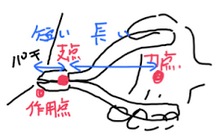Struggling with Those Scissors? Rethink Your Tools with the Science of Levers and Work!
I’m Ken Kuwako, a science trainer. Every day is an experiment!
Hello everyone! Do you ever just grab a pair of scissors or pliers from your drawer and use them without thinking? What if knowing the hidden rules of force behind these tools could make your daily life smarter and more fun? The truth is, the tools we use every day are packed with the science laws we learned in school. Today, we’re going to uncover the mystery of a physics principle hidden in everyday tools, one that even the ancient wise man Archimedes loved. Now, let’s start with a little brain teaser!
【Quiz】A Tough Wire: Which Tool Do You Choose?
Imagine you need to cut a thick wire right now. You have three tools in front of you. Which one will make the job easiest?
A: A pair of scissors
B: A pair of wire cutters (nippers)
C: A pair of needle-nose pliers
Just go with your gut feeling. Behind your answer lies a great principle that moves the world.
Master the Magic of “The Principle of the Lever”!
The key to solving this puzzle is the “Principle of the Lever” you learned in elementary school. It’s the secret behind that magical phenomenon where you can play on a seesaw with a heavier friend or move a heavy object with a pole.
This principle can be easily understood with the concept of “force moment.” The term “moment” might sound difficult, but it’s basically the “power of a force to cause rotation.” The center of this rotation is the fulcrum, the point where we apply force is the effort, and the point where the wire is cut is the load. The “distance” between these three points holds the secret to amplifying force.
F1×A=F2×B
This formula shows a truly magical law: “the longer the distance from the fulcrum to the effort (A), and the shorter the distance from the fulcrum to the load (B), the greater the force (F2) you can create with a small amount of force (F1).” For example, this tool has a long distance from the effort to the fulcrum, allowing it to produce a large amount of force.
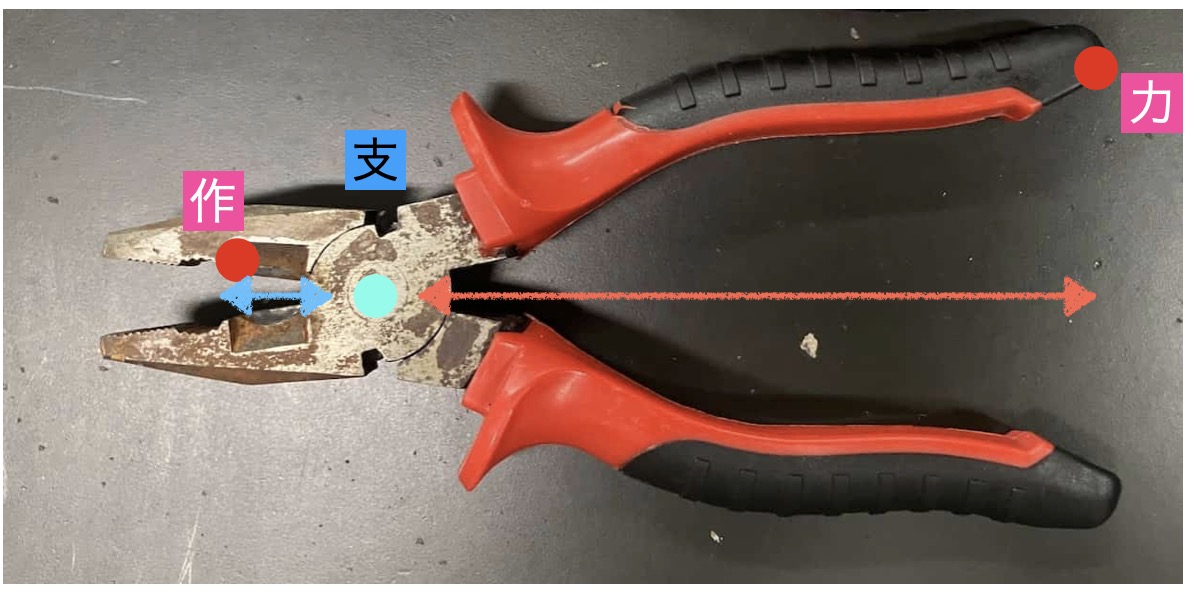
Let’s Dissect Our Tools with the Scalpel of Science!
Now, let’s use the “Principle of the Lever” as our scalpel to dissect the structure of our three tools.
Scissors: The long-distance runner built for speed 🏃♀️
Scissors are characterized by a long distance from the fulcrum to the handle (effort) and a long blade (load). This design is meant for quickly making a long, smooth cut through things like paper. They prioritize speed and range, but aren’t great for cutting tough materials.
Wire Cutters (Nippers): The powerlifting specialist 🏋️
Look at the structure of wire cutters! The handle (effort) is long, and the blade (load) is right next to the fulcrum. This is a design that maximizes the “Principle of the Lever” for power! They are reliable heavyweights that turn our small force into a huge cutting force.
Needle-Nose Pliers: The precise technician 👨🔧
Needle-nose pliers are great for delicate tasks like gripping and bending things. They do have a cutting edge, but it’s not as close to the fulcrum as on wire cutters. This makes them stronger for cutting than scissors, but they fall a step short of the power-focused wire cutters. They are a versatile all-rounder.
The Answer and the “Principle of Work”
You’ve probably figured it out by now. According to the Principle of the Lever, the strength of the force is…
Wire Cutters > Needle-Nose Pliers > Scissors
So, the correct answer was B!
What this puzzle reveals is the “philosophy of using the right tool for the right job.” If you try to force a pair of scissors to cut a hard wire, you’ll chip the blades and break the tool. To get the most out of a tool, it’s essential to understand its structure through the lens of science.
The Tools Around Us and the “Trade-off” of the “Principle of Work”
Now, let’s explore more tools around us! Take nail clippers, for example, which can snip those tough nails.
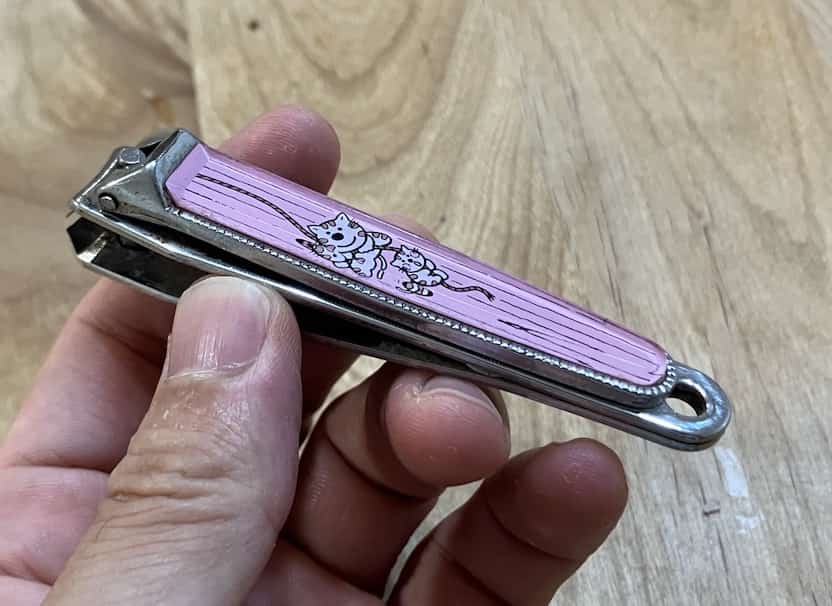
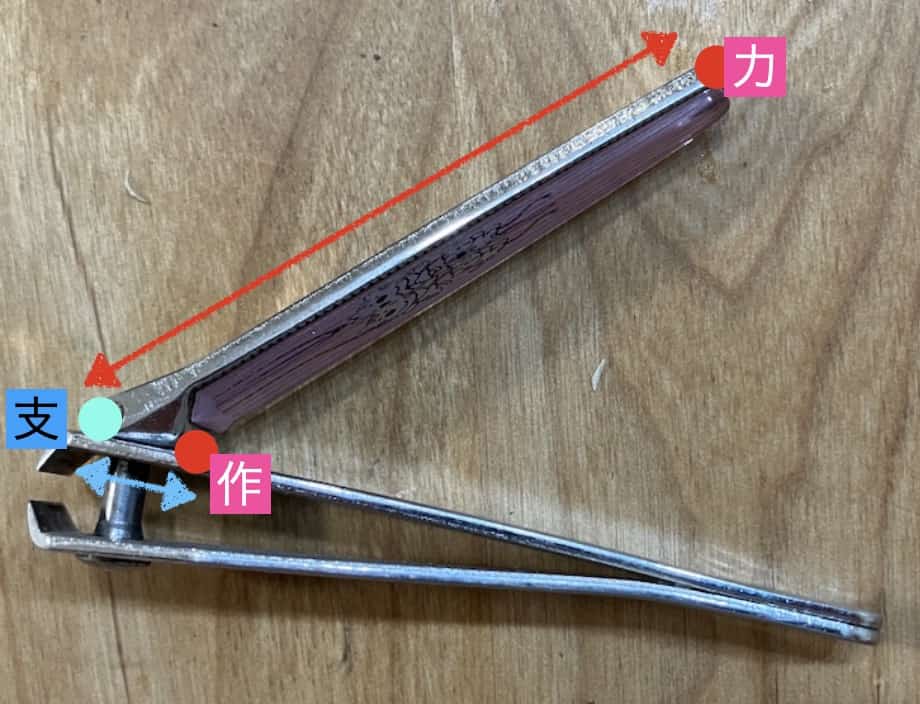
Nail clippers actually have a “double-lever” structure, combining two levers! By doubling the magic of the lever, they generate immense force. However, the world of physics is fair. There is an absolute rule called the “Principle of Work,” and you can’t cheat it.
Work = Force × Distance
This formula means that the total amount of work remains the same, no matter what tool you use. Nail clippers and wire cutters get the “benefit” of a larger force, but they pay the “price” of having to move the handle a greater distance.
Tools That Sacrifice Power for Dexterity
What about tweezers and tongs?
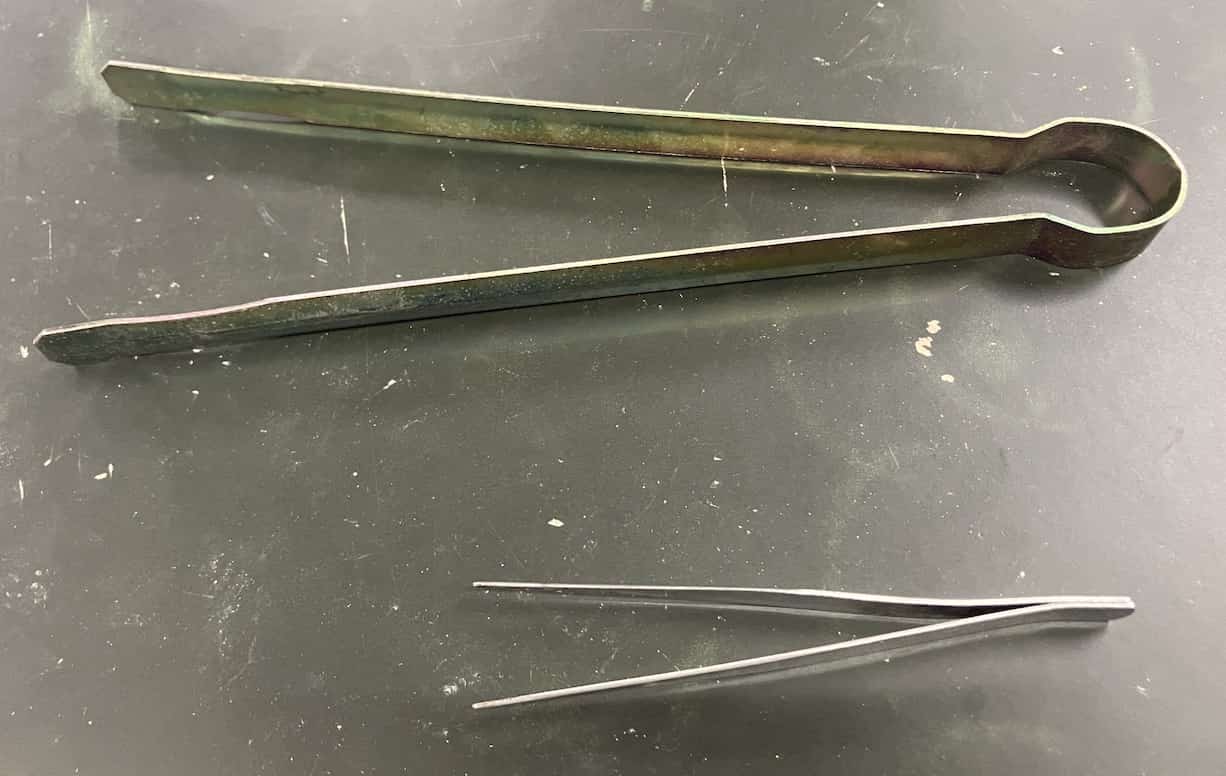

Surprisingly, these are the exact opposite of wire cutters! The distance from the fulcrum to the load is longer, so the force they produce is less than the force you apply. They deliberately sacrifice power to gain “distance” (dexterity). By moving the handle just a little, the tips move a lot, allowing for delicate work or safely picking up hot objects. It’s a perfect trade-off!
The Secret Relationship Between a Screwdriver and a Doorknob
One last puzzle to solve. Why do screwdrivers have handles of different thicknesses?
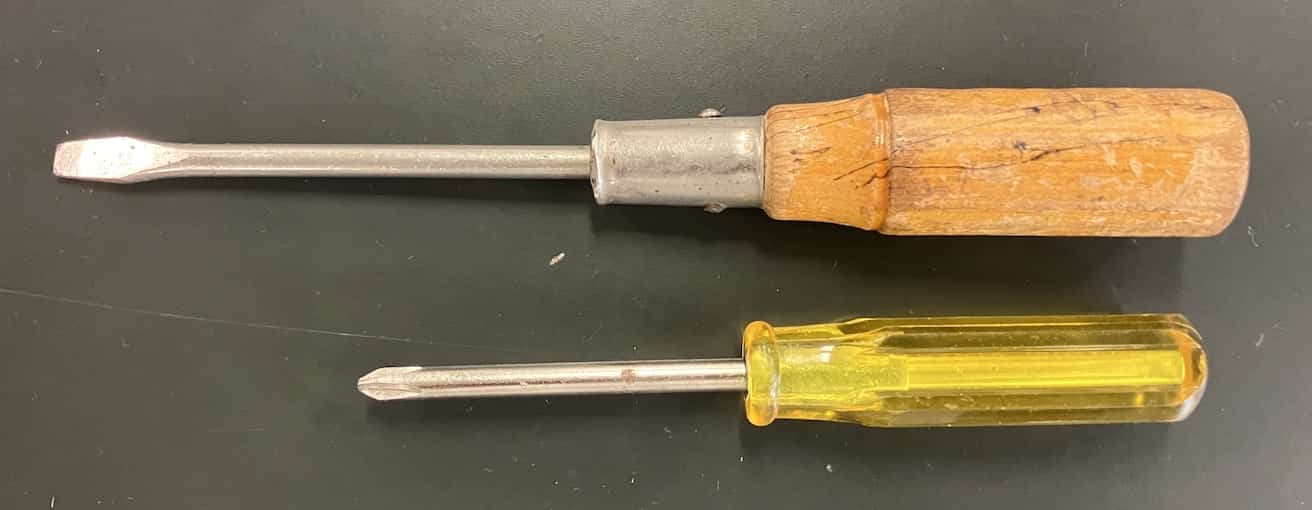
Here’s a hint: this doorknob. Why do we have a knob to open a door?
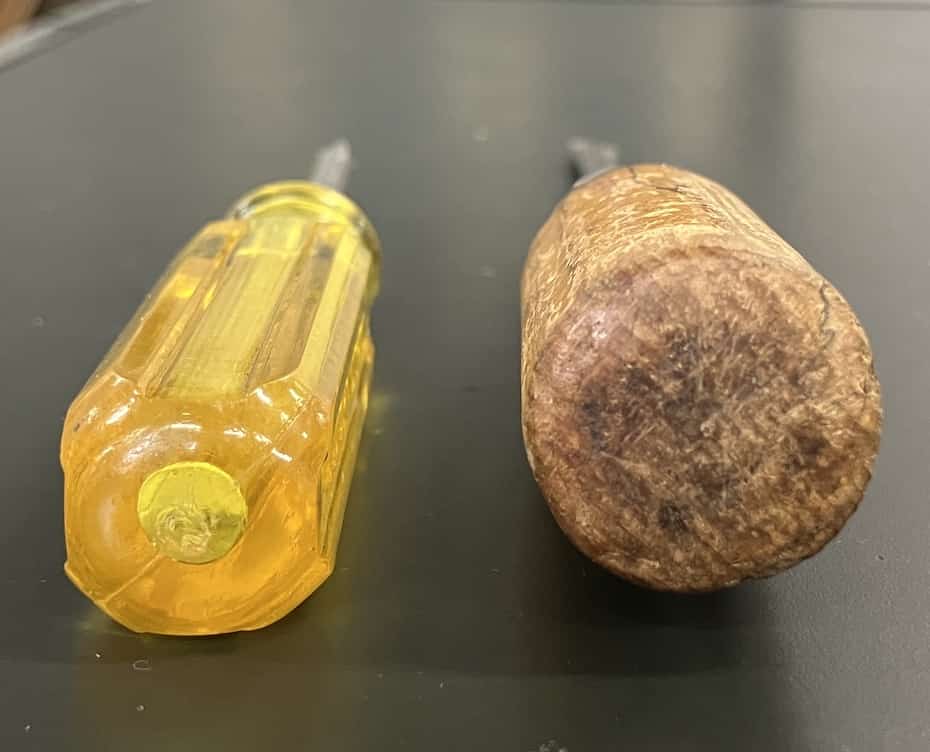
The answer is that both use a mechanism called a “wheel and axle,” which is a type of lever. A small force rotating a large wheel (the handle or knob) is converted into a large force rotating a small axle (the screw or the door’s spindle). This is why a screwdriver with a thicker handle makes it easier to turn a tight screw!
The World is Full of Scientific Puzzles!
These magical tools enrich our lives by using the power of science. The next time you pick up a tool, remember what you learned today. Your everyday world will surely look more interesting and brilliant. What kind of science is hidden around you? 😉
Inquiries and Requests
Make the wonders and fun of science more accessible! We’ve put together fun science experiments you can do at home and their tricks, all in an easy-to-understand way. Please search for various topics!
・About the author, Ken Kuwako: Click here
・For various requests (writing, lectures, experiment classes, TV supervision, appearances, etc.): Click here
・Article updates are posted on X!
![]() Science Neta Channel is streaming experiment videos!
Science Neta Channel is streaming experiment videos!



